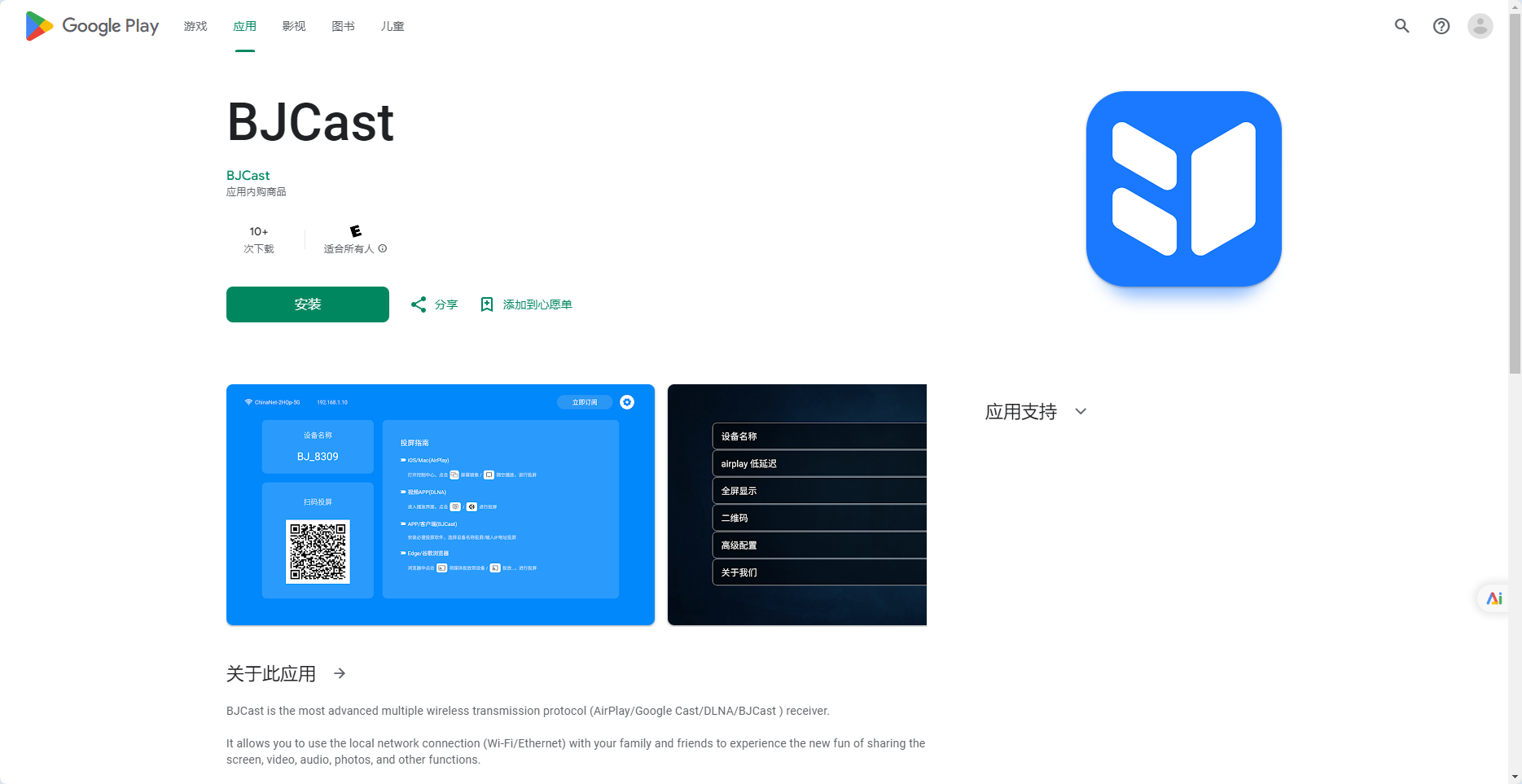How do I cast to my TV?|BJCast
Casting to your TV, also known as screen mirroring, allows you to display the content of your mobile device or computer onto your TV screen in real-time. Here are the detailed steps for casting to your TV, depending on different scenarios and devices:
Using Built-in Casting Features
-
Ensure Compatibility and Connectivity
- Ensure that your TV supports casting features. Many smart TVs (such as LG, Samsung, Sony, etc.) have built-in casting functions, while some older TVs may require external devices (such as Chromecast, Apple TV, etc.).
- Make sure your mobile device or computer and TV are connected to the same Wi-Fi network. This is a basic requirement for casting.
- Check for system updates on both your mobile device and TV to ensure you are using the latest software versions for the best casting experience.
-
Casting from Android Phones
- Open the “Settings” app on your Android phone.
- Navigate to the “Connected Devices” or “Connection & Sharing” option.
- Tap on “Cast” or “Wireless Display”.
- Select your TV from the list of available devices.
- Wait for the connection to succeed, and your Android phone’s screen will be displayed on the TV.
-
Casting from iPhones
- Ensure your iPhone and TV are connected to the same Wi-Fi network.
- Swipe down to open the Control Center on your iPhone.
- Tap on “Screen Mirroring” or “AirPlay“.
- Select your TV or Apple TV to connect.
- If a casting password is displayed on the TV, enter it on your iPhone. Once connected, your iPhone’s screen will be displayed on the TV.
-
Casting from Computers
- Windows Computers
- Ensure your computer and TV are connected to the same Wi-Fi network.
- Click the “Start” menu and select “Settings”.
- Click on “Devices”, then select “Connect to a Wireless Display or Dock”.
- Choose your TV and wait for the connection to succeed. Once connected, your computer’s screen will be displayed on the TV.
- Mac Computers
- Ensure your Mac and TV are connected to the same Wi-Fi network.
- Click the AirPlay icon in the top-right corner of your screen.
- Select your TV and wait for the connection to succeed. Once connected, your Mac’s screen will be displayed on the TV.
- Windows Computers
Using Casting Devices
If your TV does not support built-in casting features, you can use external devices to achieve casting.
-
Casting with Chromecast
- Insert Chromecast into the HDMI port of your TV and ensure it is connected to a power source.
- Download and install the Google Home app on your mobile device.
- Follow the prompts to set up Chromecast within the Google Home app.
- Once connected, you can find the “Cast” button in supported casting apps and select Chromecast to start casting.
-
Casting with Apple TV
- Connect Apple TV to the HDMI port of your TV and ensure it is connected to a power source.
- Ensure your iPhone, iPad, or Mac is connected to the same Wi-Fi network as Apple TV.
- Open AirPlay on your device and select Apple TV to start casting.
- Casting with BJCast
Download and install BJCast screen casting software on Google Play;
Open the software and enter the screen casting code or QR code to cast the screen.

Common Issues and Solutions
-
Unable to Find Device
- Ensure both devices are connected to the same Wi-Fi network.
- Restart both devices and try connecting again.
- Check the casting settings on your TV to ensure casting is enabled.
-
Unstable Connection
- Ensure good Wi-Fi signal strength by positioning devices closer to the router.
- Avoid using other high-bandwidth applications during casting.
-
Casting Delay
- Try closing other devices connected to the same network to free up bandwidth.
- Check for system updates on both your mobile device and TV.
By following these steps, you should be able to cast content from your mobile device or computer to your TV, enjoying a larger screen and enhanced viewing experience.